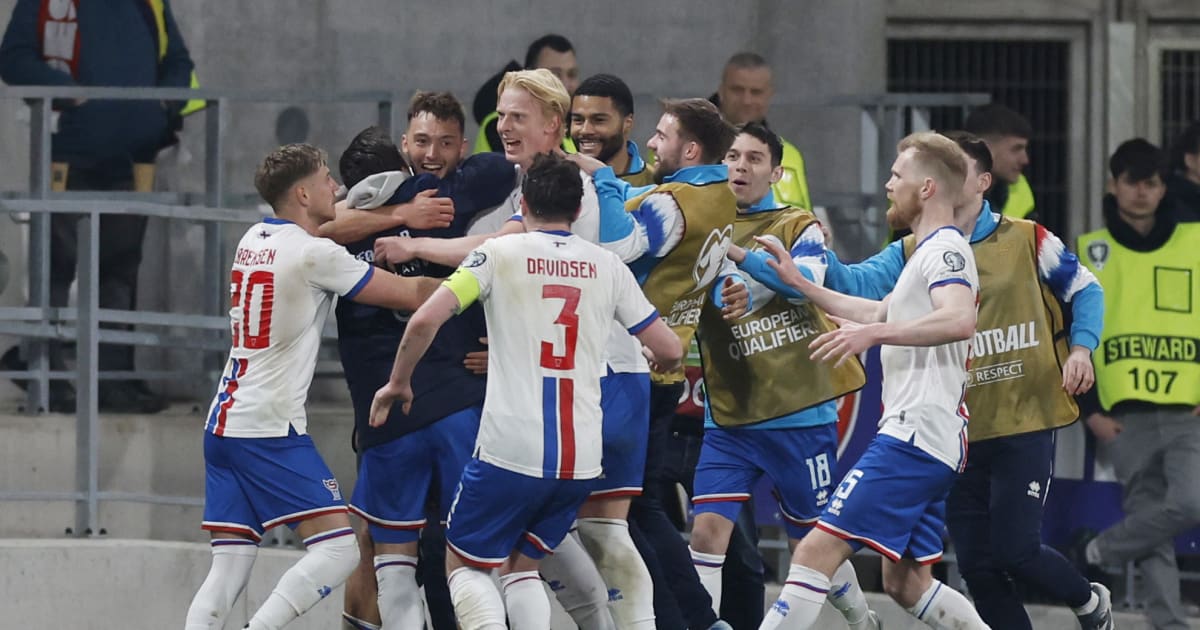The Faroe Islands' quest for the 2026 FIFA World Cup: Can one of the world's smallest international teams make history?

On Friday, 14 November, the men's football team of the Faroe Islands — a tiny archipelago hidden in the North Atlantic — face the biggest test of their extraordinary 2026 World Cup qualifying campaign: a match with the mighty Croatia, a nation full of football pedigree positioned 116 spots higher in the FIFA World Rankings and undefeated in Group L.In years past, such a fixture would be seen as something as close to a guaranteed win for Croatia as you could get. But in 2025, things are different.The landsliðið, as the Faroe Islands men’s team are known, are no longer minnows to be feasted upon by the sharks of world football. With stunning wins over Montenegro and Czechia last month, the Faroe Islands sit third in the group, within sight of a first World Cup appearance.So how did this group of players and coaches take a community of just under 55,000 people closer than ever to the biggest competition in world football?‘Nothing is impossible’: Proud coach Eric Chelle leads Nigeria’s push for 2026 FIFA World Cup qualification2027 FIFA Women’s World Cup: Holders Spain and European champions England drawn together in qualifying - all groups - complete teams listLandskrona to Tórsvøllur: the making of a hard-to-beat teamFootball in the Faroe Islands — a self-governing territory within the Kingdom of Denmark — grew out of small communities and volunteer-run clubs. For years it meant part-time players, long journeys, and games on windswept pitches.Before joining FIFA in 1988, the Faroe's football was confined to non-FIFA friendlies — mostly against Iceland, the Shetland Islands, the Orkney Islands, Greenland, and Denmark's U21 team — and these fixtures were not included in the Faroe Islands Football Association's (FSF) official records.UEFA membership followed in 1990 and, soon after, a first signature result: a 1–0 win against Austria in EURO ’92 qualifying. Played in Landskrona, Sweden, due to there being zero certified grass pitches in the Faroe Islands at the time, it defined the team’s early identity.Though the Faroe Islands failed to qualify for the European Championships in 1992, the win against Austria was immediately immortalised in local folklore and helped spur the continued growth of football on the islands, including the domestic league: the Faroe Islands Premier League.Founded in 1942 and contested by 10 clubs, the Premier League forms the backbone of the national team. Most internationals come through clubs like HB Tórshavn, B36 Tórshavn, KÍ Klaksvík, and B68 Toftir—community institutions that run youth teams, train in the evenings, and draw much of their talent from nearby towns. Because the weather is wet and windy for much of the year, many pitches are artificial, enabling players to train year-round on reliable surfaces instead of losing weeks to waterlogged grass.Every summer a few Faroese clubs enter European qualifiers. Even short campaigns matter. A two-leg tie against a Danish or Norwegian side exposes local players to a faster tempo, different tactics, and the practical realities of international travel. Over time, the best performers move into professional setups in Scandinavia, Iceland, or elsewhere in Europe. Defender Hanus Sørensen, who is the Faroe's top scorer in their World Cup qualifying campaign with three goals, currently plays in Slovenia for NK Triglav Kranj, on loan from NK Celje (another Slovenian side). Centre-forward Jóan Símun Edmundsson is at KA Akureyri (Iceland), and Meinhard Olsen is a winger at Kolding IF (Denmark).Others stay at home, semi-professional, and fit football around their day job or study.Centre-back Odmar Færø was back at his furniture company desk 12 hours after the win over Czechia, while Torkil Nielsen — the scorer in that famous win over Austria in Landskrona — was a construction company salesman.The national team’s “home” has evolved too. Early on, big matches were staged at Svangaskarð in the village of Toftir. Today they’re played at Tórsvøllur in the capital, Tórshavn — a compact stadium with a capacity of 6,500 where the stands are close to the pitch and the sound carries. Crowds aren’t large by European football standards, but they’re knowledgeable and involved, and the conditions can be awkward for visitors: swirling wind, rain off the Atlantic, and a surface the Faroes know well. When the press is timed right and set-pieces are delivered accurately, opponents can find the evening uncomfortable.Head coach Eyðun Klakstein, appointed this year, has his side organised and clear. Players know their roles, set-pieces are well rehearsed, and when space opens, they break quickly rather than dwell on the ball. It isn’t glamorous, but it suits the Islands, and it’s the approach that has moved them from merely surviving in qualifiers to competing in them, both home and away.Can the Faroe Islands qualify for World Cup 2026? Group L updates and scenariosThe Faroes began their qualifying campaign for the 2026 World Cup - jointly hosted by the United States, Mexico, and Canada - with two away defeats in March (2–1 in Czechia; 1–0 in Montenegro).A first win arrived in June against Gibraltar in Tórshavn. September split the window — a tight 0–1 defeat to Croatia at Tórsvøllur, then a 1–0 victory away to Gibraltar — before two monumental wins in October against Montenegro (4-0) and a stunning 2–1 triumph against Czechia (positioned 97 places higher in the world rankings), both in Tórshavn. There were fewer than 3,000 fans in attendanceAll told, the Faroe Islands sit third in Group L, one point behind the second-placed Czechs, who are in the only play-off spot. That's the good news.The bad news is that in order to reach the European playoffs (a March 2026 mini-tournament of single-leg semi-finals and finals for group runners-up, plus a few Nations League entrants, to decide the last UEFA spots at the World Cup), the Faroe Islands must better Czechia’s result on the final matchday. That’s a difficult ask: Czechia host winless Gibraltar, while the Faroes travel to group leaders Croatia, runners-up in 2018 and third in 2022.That match is scheduled for Friday, 14 November, at 19:45 local time.It may seem a tall task, but this squad has already shown it can upset the odds. Whatever happens on Friday evening, the qualifying campaign already reads as a success: it has lifted national pride, drawn global attention, and provided renewed inspiration for the next generation of football players who call the 18 islands home.As coach Klakstein wrote in his rallying letter to his compatriots ahead of the clash against Croatia:“We are Faroese — shaped by the wind, beaten by the storms, softened by the rain. We do not back down from great challenges. We will. We can. We shall. We must.”




.jpg)
)







